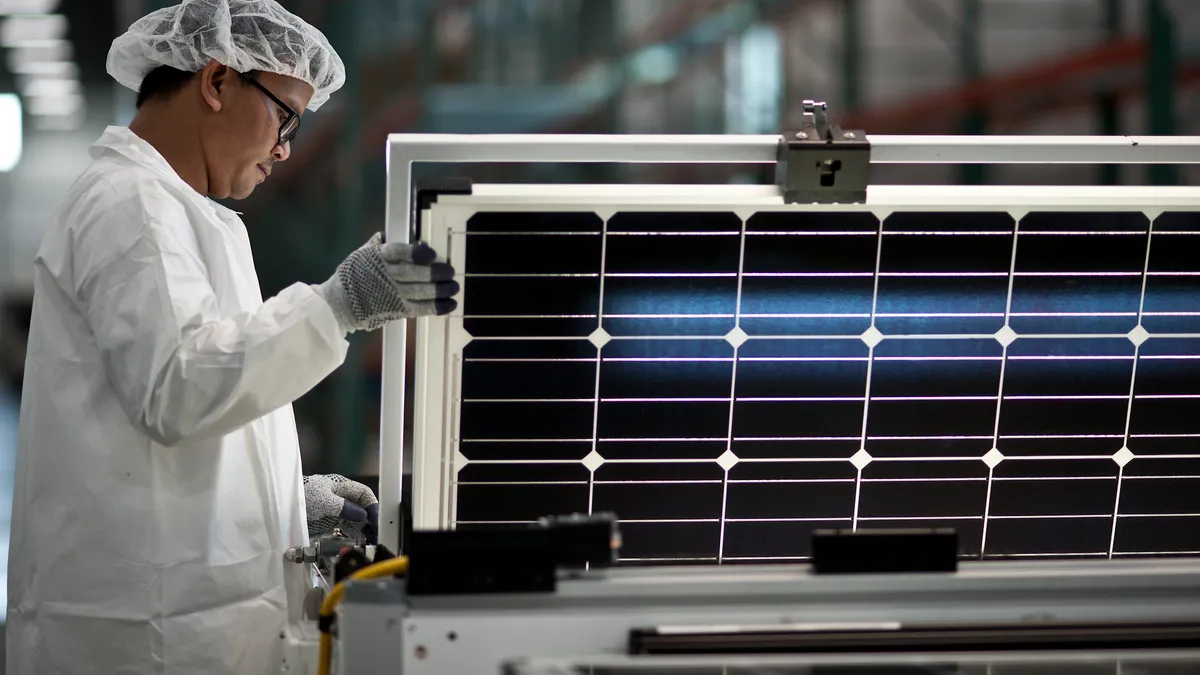Dive Brief:
-
Solar power could represent 40% of U.S. electrical generation and could sustain as many as 1.5 million jobs by 2035, according to a report on the Biden administration's solar policies released by the White House on Tuesday.
-
To decarbonize the U.S. grid by 2035, the nation must deploy solar at three to four times the current rate, according to the report. The extension of investment and production tax credits by Congress could increase the rate of deployment, as could new incentives for storage and transmission projects, the report says.
-
Solar industry groups praised the report for highlighting the industry's growth and potential, and expressed optimism that it signals potential reforms to tax policy and other potential incentives.
Dive Insight:
Solar will play a critical role in decarbonizing the U.S. electric grid, but only if the pace of deployment and investment accelerates, the White House report stated.
Citing an as-yet unreleased analysis by the National Renewable Energy Laboratory, the report indicates that deployment of solar must accelerate to three to four times its current rate by 2030 in order to decarbonize the electric grid by 2035. The report noted several congressional actions to accomplish this goal, including the extension of investment and production tax credits, the creation of new incentives for transmission and storage projects, and promoting community and residential solar for low- and moderate-income households.
"It’s encouraging to see the Biden administration continue to prioritize accelerating the transition to a renewable energy economy," Gregory Wetstone, president and CEO of the American Council on Renewable Energy (ACORE), said in a statement. "As the report makes clear, seizing this growth opportunity will require rapid transformation of the power sector and significant investment in a 21st century grid. But the payoff will be both climate protection and greater economic prosperity."
Tax reformation, Wetstone continued, will be a critical step in achieving the White House's goals. "We must move the renewable sector beyond the endless cycle of temporary stopgap measures to a stable, predictable, and long-term clean energy tax platform that helps decarbonize the economy while putting millions of Americans back to work," he said.
Alisa Petersen, manager of RMI's U.S. program, noted that although investor-owned utilities, municipalities and co-ops own 55% of the U.S.'s generating capacity, they currently own just 11% of utility-scale solar installations. Creating a direct pay tax credit, she said, would create more credit flexibility and allow these organizations to deploy more solar resources. One analysis, she said, projected that creating a solar production tax credit with a direct pay option would double emissions reductions, compared to extending the full value of existing credits.
The Solar Energy Industries Association (SEIA) also called for attention to trade policy while praising the report. In a note sent to SEIA members on Tuesday, SEIA president and CEO Abigail Roth Hopper noted that four companies have filed anonymous petitions for new tariffs on solar cell and module imports from Malaysia, Vietnam and Thailand.
"The disruptive and harmful impact of new trade petitions and [U.S. Customs and Border Protection] enforcement action cannot be understated," she wrote. "SEIA will continue to aggressively oppose any effort to unfairly favor one set of imports over another, or trade actions that hinder our industry’s ability to meet critical climate goals."














